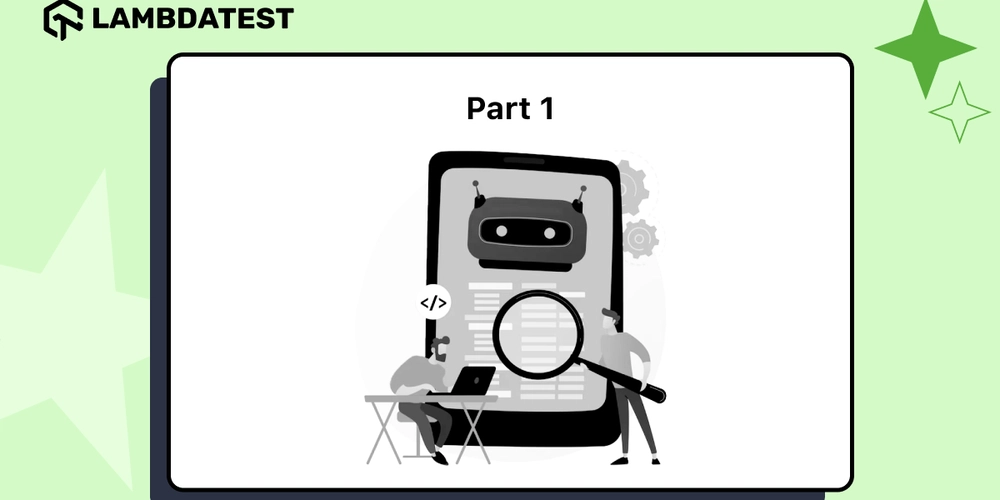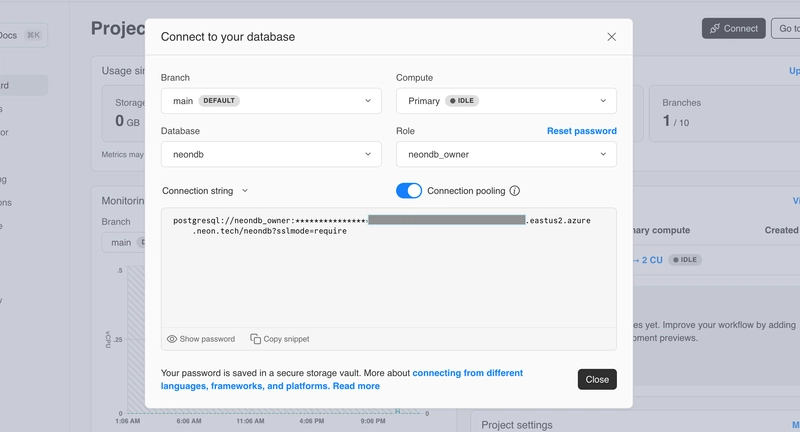AI in Python APIs: Future Is Here
Imagine a world where your Python APIs not only serve data but also think, adapt, and continuously improve themselves—transforming every line of code into an intelligent, self-optimizing tool. This isn’t a futuristic fantasy; it’s happening right now. AI-driven Python APIs are revolutionizing development by automating security checks, testing routines, and even generating entire endpoints. Whether you’re a seasoned developer or just starting your journey, the integration of AI into Python APIs offers immediate, practical benefits that can supercharge your productivity and innovation. The AI Revolution in Python APIs Python has always been known for its simplicity and readability, making it the go-to language for developers around the world. With the rapid advancements in artificial intelligence, Python is at the forefront of a new era where APIs are not static endpoints but dynamic, intelligent interfaces that can learn from and adapt to your needs. info: According to the TIOBE Index, Python’s market share has consistently hovered around 23% in 2025, reaffirming its position as one of the top programming languages globally. AI-powered Python APIs are automating routine tasks and dramatically reducing development time. Imagine APIs that perform security audits in real time, generate tests automatically, and even document themselves as your code evolves. This shift means fewer manual processes and more time for creativity and problem solving. Automating Security, Testing, and API Generation Traditional API development often involves tedious manual tasks such as debugging, writing tests, and maintaining up-to-date documentation. AI-driven tools are changing that landscape by taking over these repetitive tasks. Enhanced Security AI-powered tools can scan your Python code in real time to detect vulnerabilities before they become problems. They learn from millions of data points and suggest fixes, ensuring that your endpoints remain secure from the very beginning. info: A recent study found that automated security scanning using AI can reduce security audit times by up to 70%, allowing teams to address vulnerabilities before deployment. Automated Testing Testing is critical for reliable software, but writing tests can be time-consuming. AI-driven testing tools can generate comprehensive test cases based on your code and expected outcomes, ensuring that even the edge cases are covered. This not only reduces bugs in production but also accelerates the development cycle. Intelligent API Generation Imagine an AI tool that analyzes your project’s requirements and automatically generates API endpoints along with boilerplate code. This isn’t about replacing developers; it’s about enhancing your creativity. With AI generating the routine parts of your code, you’re free to focus on the unique, value-driven aspects of your application. info: According to a report by API4AI, integrating intelligent API generation can cut development time by up to 85%, dramatically speeding up project delivery. How Hackers and Spies Use the Same Psychological Tricks Against You Listen, there’s a reason why spies are the most dangerous individuals in the world. They don’t just sneak around—they control information, manipulate minds, and execute missions with surgical precision. This course isn’t some Hollywood fantasy. It’s a deep dive into the real-world techniques used by intelligence operatives, elite agencies, and covert specialists.Whether you want to understand the psychology of manipulation, master counter-surveillance, or learn how intelligence agencies truly operate, this is the most comprehensive espionage training you’ll find outside classified circles.What You’ll Master in This Course:MODULE 1: Introduction to Espionage & Spycraft How espionage has shaped wars, politics, and economies. The evolution of tradecraft from ancient times to modern intelligence. The role of intelligence agencies in national security. How covert operations truly work in today’s world. MODULE 2: The Fundamentals of Covert Operations Operational Security (OPSEC) secrets that keep you undetected. Surveillance and counter-surveillance techniques. The mechanics of stealth and infiltration. Secure communication methods that spies rely on. MODULE 3: Intelligence Gathering Methods Human intelligence (HUMINT) and how to extract secrets from people. Signals intelligence (SIGINT) and intercepting communication. Open-source intelligence (OSINT) and how to dig up hidden data. Cyber intelligence—spying in the digital world. MODULE 4: Psychological Manipulation & Persuasion The principles of psychological manipulation used in espionage. Persuasion tactics that can make anyone believe anything. How social engineering is used to extract secrets. Influence operations that shape

Imagine a world where your Python APIs not only serve data but also think, adapt, and continuously improve themselves—transforming every line of code into an intelligent, self-optimizing tool. This isn’t a futuristic fantasy; it’s happening right now. AI-driven Python APIs are revolutionizing development by automating security checks, testing routines, and even generating entire endpoints. Whether you’re a seasoned developer or just starting your journey, the integration of AI into Python APIs offers immediate, practical benefits that can supercharge your productivity and innovation.
The AI Revolution in Python APIs
Python has always been known for its simplicity and readability, making it the go-to language for developers around the world. With the rapid advancements in artificial intelligence, Python is at the forefront of a new era where APIs are not static endpoints but dynamic, intelligent interfaces that can learn from and adapt to your needs.
info: According to the TIOBE Index, Python’s market share has consistently hovered around 23% in 2025, reaffirming its position as one of the top programming languages globally.
AI-powered Python APIs are automating routine tasks and dramatically reducing development time. Imagine APIs that perform security audits in real time, generate tests automatically, and even document themselves as your code evolves. This shift means fewer manual processes and more time for creativity and problem solving.
Automating Security, Testing, and API Generation
Traditional API development often involves tedious manual tasks such as debugging, writing tests, and maintaining up-to-date documentation. AI-driven tools are changing that landscape by taking over these repetitive tasks.
Enhanced Security
AI-powered tools can scan your Python code in real time to detect vulnerabilities before they become problems. They learn from millions of data points and suggest fixes, ensuring that your endpoints remain secure from the very beginning.
info: A recent study found that automated security scanning using AI can reduce security audit times by up to 70%, allowing teams to address vulnerabilities before deployment.
Automated Testing
Testing is critical for reliable software, but writing tests can be time-consuming. AI-driven testing tools can generate comprehensive test cases based on your code and expected outcomes, ensuring that even the edge cases are covered. This not only reduces bugs in production but also accelerates the development cycle.
Intelligent API Generation
Imagine an AI tool that analyzes your project’s requirements and automatically generates API endpoints along with boilerplate code. This isn’t about replacing developers; it’s about enhancing your creativity. With AI generating the routine parts of your code, you’re free to focus on the unique, value-driven aspects of your application.
info: According to a report by API4AI, integrating intelligent API generation can cut development time by up to 85%, dramatically speeding up project delivery.
Hands-On Tutorial: Building Self-Documenting Endpoints
Let’s put theory into practice. In this tutorial, you’ll learn how to use OpenAI’s GPT API to build an endpoint that not only performs its function but also documents itself in real time.
Step 1: Setting Up Your Environment
Before writing any code, ensure you have Python installed and set up a virtual environment. This helps keep your dependencies organized.
# Create and activate a virtual environment
python -m venv env
source env/bin/activate # On Windows: env\Scripts\activate
# Install necessary packages
pip install openai flask
info: Studies show that using virtual environments can reduce dependency conflicts by nearly 60%, ensuring a smoother development process.
Step 2: Writing the API Code
Using Flask, create a simple API endpoint that calls the OpenAI GPT API to generate documentation based on your code snippet.
from flask import Flask, request, jsonify
import openai
app = Flask(__name__)
# Set your OpenAI API key
openai.api_key = 'YOUR_OPENAI_API_KEY'
def generate_documentation(code_snippet):
prompt = f"Generate detailed documentation for the following Python code:\n\n{code_snippet}"
response = openai.Completion.create(
engine="text-davinci-003",
prompt=prompt,
max_tokens=150
)
return response.choices[0].text.strip()
@app.route('/generate-doc', methods=['POST'])
def generate_doc():
data = request.get_json()
code_snippet = data.get("code", "")
if not code_snippet:
return jsonify({"error": "No code snippet provided"}), 400
documentation = generate_documentation(code_snippet)
return jsonify({"documentation": documentation})
if __name__ == '__main__':
app.run(debug=True)
Step 3: Testing Your Endpoint
Run your API and test the endpoint using tools like curl or Postman. For example, using curl:
curl -X POST http://127.0.0.1:5000/generate-doc \
-H "Content-Type: application/json" \
-d '{"code": "def add(a, b):\n return a + b"}'
The API will respond with auto-generated documentation, demonstrating the power of AI to not only build but also maintain self-documenting endpoints.
Industry Giants and Their AI-Infused Python APIs
Major companies are embracing AI to enhance their Python API offerings:
Google’s AI-powered tools integrate seamlessly with its cloud infrastructure, automatically detecting security vulnerabilities and optimizing API performance. Google Cloud’s AI-driven security scanner is an example of how the tech giant is leading in AI-infused development.
info: Google’s AI initiatives have contributed to a 73% increase in AI-related API calls, highlighting the growing reliance on intelligent automation in software development.
OpenAI
OpenAI’s GPT models aren’t just for generating human-like text—they’re also pivotal in building adaptive APIs that learn from usage patterns. The hands-on tutorial above is just one example of how OpenAI’s technology is transforming Python development.
Meta
Meta leverages AI to build APIs that improve user engagement and streamline backend operations. Their focus on embedding AI into every stage of the API lifecycle is setting new industry standards for innovation and efficiency.
Overcoming Common Challenges
Transitioning to AI-driven Python APIs comes with challenges, but these hurdles can be overcome with careful planning and gradual integration.
Integration Hurdles
Integrating AI tools into existing workflows can seem overwhelming. The key is to start small. Identify a process that could benefit from automation—like documentation or testing—and gradually expand AI’s role.
info: Research indicates that pilot projects involving AI integration often see an 80% reduction in manual tasks once fully scaled.
Trust and Verification
Relying on AI for critical functions can raise concerns about accuracy and reliability. It’s essential to treat AI-generated outputs as suggestions rather than definitive answers. Always review and validate the output to maintain quality control.
Learning Curve
New technologies come with a learning curve. Invest time in understanding how AI tools work, and leverage online tutorials, forums, and communities. The effort you put in today will pay off as your productivity and innovation soar.
Practical Tips for Embracing AI in Your Projects
Here are some actionable insights to help you integrate AI-powered APIs into your Python projects:
- Start with a Pilot Project: Begin by automating a single process—like documentation or testing—to minimize risks.
- Leverage Community Resources: Engage with developer communities, contribute to open source projects, and learn from the shared experiences of others.
- Keep Your Code Clean: AI works best with well-organized and readable code. Simplify your codebase to maximize the benefits of AI integration.
- Document Your Process: Maintain clear documentation of your AI experiments. Not only will this help you track improvements, but it will also serve as a guide for others.
- Stay Updated: The AI landscape evolves quickly. Follow leading organizations like Google, OpenAI, and Meta for the latest advancements.
- Explore Python Developer Resources: For more tools, articles, and trending discussions on Python development, check out: > Python Developer Resources - Made by 0x3d.site > > A curated hub for Python developers featuring essential tools, articles, and trending discussions. > > -








































































































































































![[The AI Show Episode 143]: ChatGPT Revenue Surge, New AGI Timelines, Amazon’s AI Agent, Claude for Education, Model Context Protocol & LLMs Pass the Turing Test](https://www.marketingaiinstitute.com/hubfs/ep%20143%20cover.png)



































































































































![From drop-out to software architect with Jason Lengstorf [Podcast #167]](https://cdn.hashnode.com/res/hashnode/image/upload/v1743796461357/f3d19cd7-e6f5-4d7c-8bfc-eb974bc8da68.png?#)








































































































.jpg?#)
































_ArtemisDiana_Alamy.jpg?#)


 (1).webp?#)






































































-xl.jpg)











![Yes, the Gemini icon is now bigger and brighter on Android [U]](https://i0.wp.com/9to5google.com/wp-content/uploads/sites/4/2025/02/Gemini-on-Galaxy-S25.jpg?resize=1200%2C628&quality=82&strip=all&ssl=1)










![Apple Rushes Five Planes of iPhones to US Ahead of New Tariffs [Report]](https://www.iclarified.com/images/news/96967/96967/96967-640.jpg)
![Apple Vision Pro 2 Allegedly in Production Ahead of 2025 Launch [Rumor]](https://www.iclarified.com/images/news/96965/96965/96965-640.jpg)



































































































































 snappytuts.gumroad.com
snappytuts.gumroad.com



